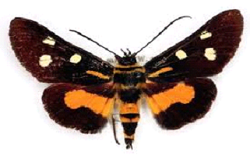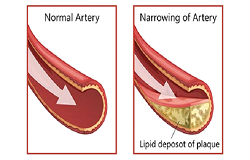|
Polity and Governance
PAN card-Aadhaar linking

|
The Central Board of Direct Taxes (CBDT) has asked all taxpayers to link their permanent account number (PAN) with their Aadhaar by March 31, 2023.
About:
- The Income-tax Department announced the linking of PAN with Aadhaar after it came across instances where multiple permanent account numbers (PANs) were allotted to one person, or where one PAN was allotted to more than one person.
- To have a robust way of de-duplication of the PAN database, it was made mandatory for a taxpayer who is eligible to obtain Aadhaar, to quote his Aadhaar in the application form for PAN and return of income.
Who needs to link PAN with Aadhaar?
- The Income-tax Act makes it mandatory for every person who has been allotted a PAN as on July 1, 2017, to intimate his/her Aadhaar number so that Aadhaar and PAN can be linked.
- This is required to be done on or before March 31, 2023, failing which the PAN shall become inoperative.
There are a few categories of individuals for whom this linkage is not compulsory.
- Any person of age 80 years and above
- A non-resident as per the Income-tax Act
- A person who is not a citizen of India
|
|
Environment
Moth Mimeusemia ceylonica
 |
Two researchers from Tamil Nadu have spotted a rare moth species for the first time in India in the buffer zone of Kalakkad–Mundanthurai Tiger Reserve (KMTR) after it was last sighted 127 years ago.
About the species:
- Mimeusemia ceylonica is a moth species belonging to the subfamily Agaristinae and family Noctuidae.
- It was first illustrated and described by English entomologist George Hampson in 1893.
- The species has been photographed for the first time, before that only illustration of the species was available in the literature.
- This is the first record of the species from Tamil Nadu, India.
- The species was rediscovered during a moth survey conducted on October 11, 2020 at the Agasthyamalai Community-based Conservation Centre (ACCC) situated in the buffer zone of KMTR, Tirunelveli district.
|
|
Science and Technology
Kodaikanal Solar Observatory
 |
The Kodaikanal Solar Observatory (KoSO) has been observing the Sun, capturing images of sunspots, and recording changes in its behaviour since last 100 years now.
About:
- KoSO is one of the world’s oldest observatories studying the Sun.
- Owned and operated by: Indian Institute of Astrophysics (IIA)
- The idea of taking pictures of the Sun using a 20-inch telescope was first proposed by the astronomer Norman Pogson, who was appointed Government Astronomer of the Madras Observatory in 1861.
- The Madras Observatory was set up as the private effort of an official of the British East India Company in 1786, and came to be managed subsequently by the company.
- KoSO is the only observatory which provides high-resolution digitised images for such a long period (with coverage of more than 75 per cent).
How sun’s images have been taken?
- White light images of the Sun (similar to viewing it with the naked eye using solar filters) have been captured every day, using a 6-inch telescope.
- Visible light images are taken because they reveal sunspots on the surface of the Sun.
- Solar magnetic plages (a bright region on the Sun’s chromosphere) are best captured in the strong chromospheric absorption lines, like the Ca II (called Ca II K).
- H-alpha observations and prominences, also recorded since 1911, taken on photographic films and plates, are available.
- A new telescope mounted with CCD cameras has taken over and, since 2017, continued to observe the Sun.
|
|
Science and Technology
Exercise TROPEX

|
The Indian Navy’s major Operational level exercise TROPEX for the year 2023, culminated this week in the Arabian Sea.
About the exercise:
- It was conducted across the expanse of the Indian Ocean, over duration of four months from November 2022 to March 2023.
- The overall exercise construct included coastal defence exercise Sea Vigil and the amphibious exercise AMPHEX, which also saw significant participation from the Indian Army, the Indian Air Force and the Coast Guard.
- The exercise took place in Indian Ocean including the Arabian Sea and the Bay of Bengal.
|
|
Science and Technology
Coronary artery disease (CAD)
 |
In a recent study published in JAMA, researchers investigated whether treat-to-target (TTT) low-density lipoprotein-cholesterol (LDL-C) therapy was useful to treat coronary artery disease (CAD) patients.
About the disease:
- Coronary artery disease (CAD) is the most common type of heart disease. It is sometimes called coronary heart disease or ischemic heart disease.
- CAD is caused by plaque buildup in the walls of the arteries that supply blood to the heart (called coronary arteries) and other parts of the body.
- Plaque is made up of deposits of cholesterol and other substances in the artery.
- Plaque buildup causes the inside of the arteries to narrow over time, which can partially or totally block the blood flow. This process is called atherosclerosis.
- Symptoms: Angina, or chest pain and discomfort. Angina can happen when too much plaque builds up inside arteries, causing them to narrow.
- Factors: Overweight, physical inactivity, unhealthy eating, and smoking tobacco are risk factors for CAD.
|










